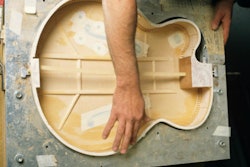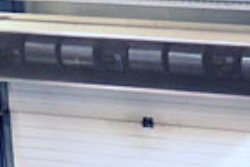While it feels like it’s an overstatement of the obvious, motors legitimately drive the production process in most modern day plants. Besides the fact that motor-driven equipment accounts for 54 percent of manufacturing electricity use – according to the U.S. Department of Energy – it also occupies a significant number of maintenance hours, and for good reason. Since motors and drive systems are so often directly intertwined with production, problem areas likely result in costly downtime — something every manufacturer wants to avoid at all costs.
A Question of Repair
“With the cost of downtime, labor, and equipment these days, a reliable repair is extremely important,” says Jim Williams, president of Bradley’s Inc., a Gregory, Texas-based industrial electric motor repair and electric motors sales facility. When it comes to electric motors, there are two main types of repair, says Williams — mechanical and electrical. Poor winding repair practices cause motors to run less efficiently, driving up energy costs. In addition, “poor mechanical repairs can lead to vibration, which can affect the life of the drive or surrounding equipment, and result in shorter run time between failures.”
According to Robert Gradisching, electro-mechanical business development manager for Lenze Americas, a global manufacturer of electrical and mechanical drives and motion control solutions, rightsizing is critical when selecting an industrial motor. It’s not uncommon for industrial plants to undersize a motor, and Gradisching stresses that a gear motor must be properly sized and not overloaded, in order to keep motors running consistently and smoothly. “Motor sizing requires accurate information about the application tasks, motion profile, inertia or max load and min/max ambient temperature,” he says. Other selection criteria includes:
- A suitable sealing for the ambient temperature range.
- The proper gear motor service factor, depending on the application (for example, a conveyor application needs a lower service factor than a metal shredded application).
- Choosing the correct bearings, which depends on the max radial and axial force.
Williams adds that in electric motors, bearing and lubrication issues are the biggest causes of failure in motors that are being used in the right application. “Several studies over the last fifty years have all revealed that a high percentage of motor failures are in the bearings, due to lubrication issues,” he says. “Bearings that never get lubricated amount for most failures.” Some of the other issues are improper lubrication, incompatible lubrication, and contamination. “One of the highest returns for your maintenance dollars is to implement a comprehensive lubrication program for all of your rotating equipment — especially motors.”
Most importantly, understanding the application and its requirements is going to be the best preventive maintenance step. Says Williams, “One of the biggest repair problems we see is when a motor is put into an application that it was not designed to do. This will cause many kinds of repetitive wear issues that even the best preventive maintenance practices will not correct.”
Energy Management
Since electric drives consume such a high proportion of total energy expanded globally, they are the most effective lever for improving energy efficiency, says Gradisching. In fact, a reduction of more than 20 percent in energy consumption, without sacrificing production output, is possible by using more intelligent solutions. Gradisching adds, “Generally the focus is on increasing motor efficiency, yet greater energy savings can often be obtained by optimally adapting the drive to the operating process. When evaluating energy use, the entire drive system, comprising inverter, motor and gearbox, should be considered — as total efficiency determines how much electric energy is required for a process.” According to Gradisching, an average industrial plant may have several hundred or even thousands of drives operating in machines and processes. Even drives that only require a little energy can make a difference to the total sum of energy consumed if they are used in large numbers. In special applications, the braking energy can also be converted into electric energy rather than releasing it unused as waste heat.
In addition, mechanical energy output can fluctuate greatly in many applications. Drives should be designed in accordance with the maximum amount of mechanical energy needed. “Optimal drive efficiency often lies in a narrow band around the rated power,” he explains. “Despite this, many drives are oversized to be on the safe side. An oversized drive operates far below its rated power, which means a higher procurement cost and lower efficiency. So it is important to accurately orientate the drives to the maximum mechanical energy required by the application.” Energy needs vary depending on the mechanical process. Large fluctuations in output power are common in cooling and heating systems, in addition to material handling if throughput is not constant. To improve efficiency, the power output by the motor must be adapted to these different needs.
Gradisching also notes that using an inverter can greatly improve energy efficiency in virtually any application by changing the motor speed, which in turn changes output power. In processes that tend to be constant, adjusting the motor’s operating point to the actual load can minimize energy losses. Using a frequency inverter to adjust the motor voltage produces better efficiency, in particular for partial load operations with standard three-phase AC motors. Modern inverters currently reach a very high efficiency between 94 and 97 percent. Controlled drives with asynchronous motors can always be implemented using synchronous motors. Lower motor currents mean less power loss in the inverter and it may be possible for a smaller inverter to be selected. “It is worth checking applications with controlled drives to see whether a synchronous motor with improved energy efficiency might offer a better solution,” he says.
Finally, gearboxes adjust the high motor speed to the mechanical process, so while worm gearboxes generally produce high losses, bevel gearboxes can be produced with great efficiencies. “They have only two percent losses per stage,” adds Gradisching. “Further improvements in efficiency are achieved if the improved gearbox efficiency means an inverter or motor of a lower power can be used.”






















